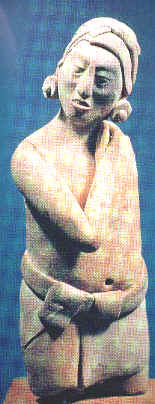|
|
Maya artists used basalt, obsidian and silex chisels, mallets and hammers made of flint and wood, and obsidian knives to produce their sculpture. With these tools they carved blocks of lime stone that were taken to the site of the monument with ritual, mythical historical and symbolic motifs, usually accompanied by calendar glyphs.
Their sculptures show the typical symbolism of Maya culture that in time gave the buildings an air of serenity, balanced proportions, dimension and depth. They depicted deities, governors and priests wearing elaborate costumes, and various personalities.
Stele mark important dates; carved monoliths and different sculptures were placed in squares, courts and temple entrances. Designs were also carved on vertical walls, columns, lintels and ceremonial chambers.
In the early Classic, stele were carved with human figures, both full face and in profile, and different zoomorphic figures. Clay figurines were at first coarse, such as those produced in 1st and 2nd centuries AD, but gradually became more refined, until they reached the degree of perfection shown by those from the island of Jaina in Campeche.
Figures were produced later in wood, and then in stone, stucco, obsidian and jade. In Classic period, human figures are usually shown on foot and in profile; later, seated figures were made. The peak was reached during the Flowering of Classic period.
When the Collapse came, artistic expression declined and sculpture became purely decorative to be followed by influence from Toltec culture in Yucatan shortly afterwards. During Post Classic, there was slight reawakening in sculpture, though generally speaking it did not reach the importance it had in earlier periods.

|
|

